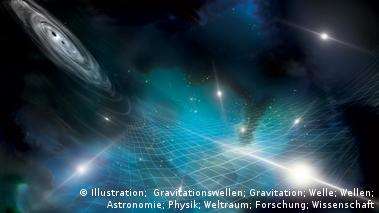
June 29, 2023, 11:00 PM
June 29, 2023, 11:00 PM
25 years ago, astronomers went after it and finally found it: the cosmic noise that permeates the entire Universe was identified thanks to an unprecedented technique for detecting gravitational waves that opens a new window to learn more about the formation of galaxies, the origin of black holes and the Universe itself.
Specifically, a team made up of scientists from all over the United States, grouped under the North American Nanohertz Observatory for Gravitational Waves (NANOGrav), discovered the distortion in space-time caused by low-frequency gravitational waves, probably produced by pairs of holes supermassive blacks.
Their findings were published this Thursday in the specialized magazine The Astrophysics Journal Letters, at the same time that other similar organizations in different countries made similar announcements.
It is the first time that this stochastic background has been detected, produced by low-frequency gravitational waves that form “a soup of space-time distortions that permeates the entire universe,” the National Science Foundation (NSF) explains in a statement. .
Gravitational waves were predicted by Einstein in 1916, but could not be detected until a hundred years later. They are tiny disturbances in space-time, similar to water waves on the surface of a pond. These oscillations, which propagate at the speed of light, are born from the effect of violent cosmic events such as the collision of two black holes.
Although they are linked to massive phenomena, their signal is extremely weak. In 2015, the Ligo (United States) and Virgo (Europe) gravitational wave detectors revolutionized astrophysics by detecting a shudder of less than a second from the collision between two black holes with a mass ten times that of the Sun.
This time, a signal much longer in time evokes a larger-scale phenomenon, captured by a network of telescopes in Europe, North America, India, Australia and China of the International Puslar Timing Array (IPTA) consortium.
“We are talking about gravitational waves generated by black holes of several million to several billion times the mass of the Sun,” Gilles Theureau, an astronomer at the Paris Observatory-PSL, told AFP.
What is the origin of these waves?
The leading hypothesis points to pairs of supermassive black holes, each larger than our solar system, “ready to collide,” explains Theureau. It is about two colossi that “revolve around each other before merging”, a dance that causes gravitational waves for “a period of several months to several years”.
A continuous background noise that Michael Keith, from the European network EPTA (European Pulsing Timing Array), compares to “a bustling restaurant with lots of people talking around you”.
The measurements do not yet allow us to say whether this noise evokes the presence of several pairs of black holes or an entire population. Another hypothesis suggests an origin from the early years of the Universe, known as the period of inflation.
















